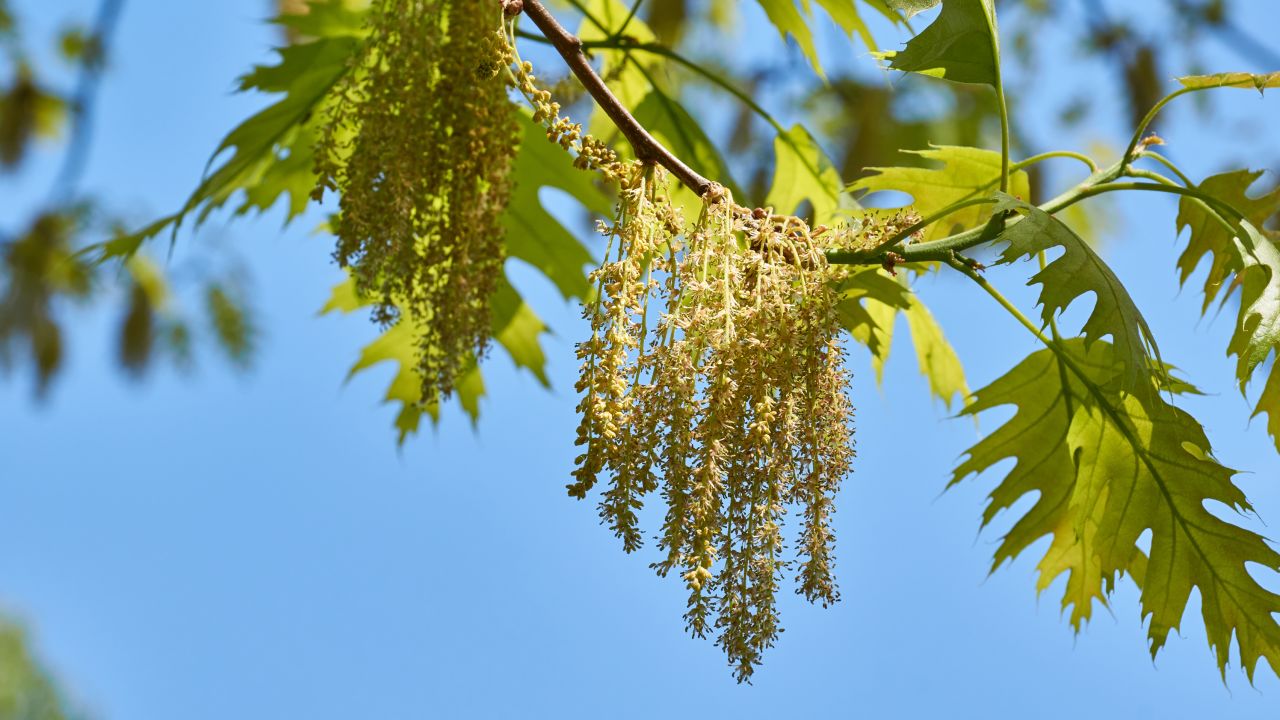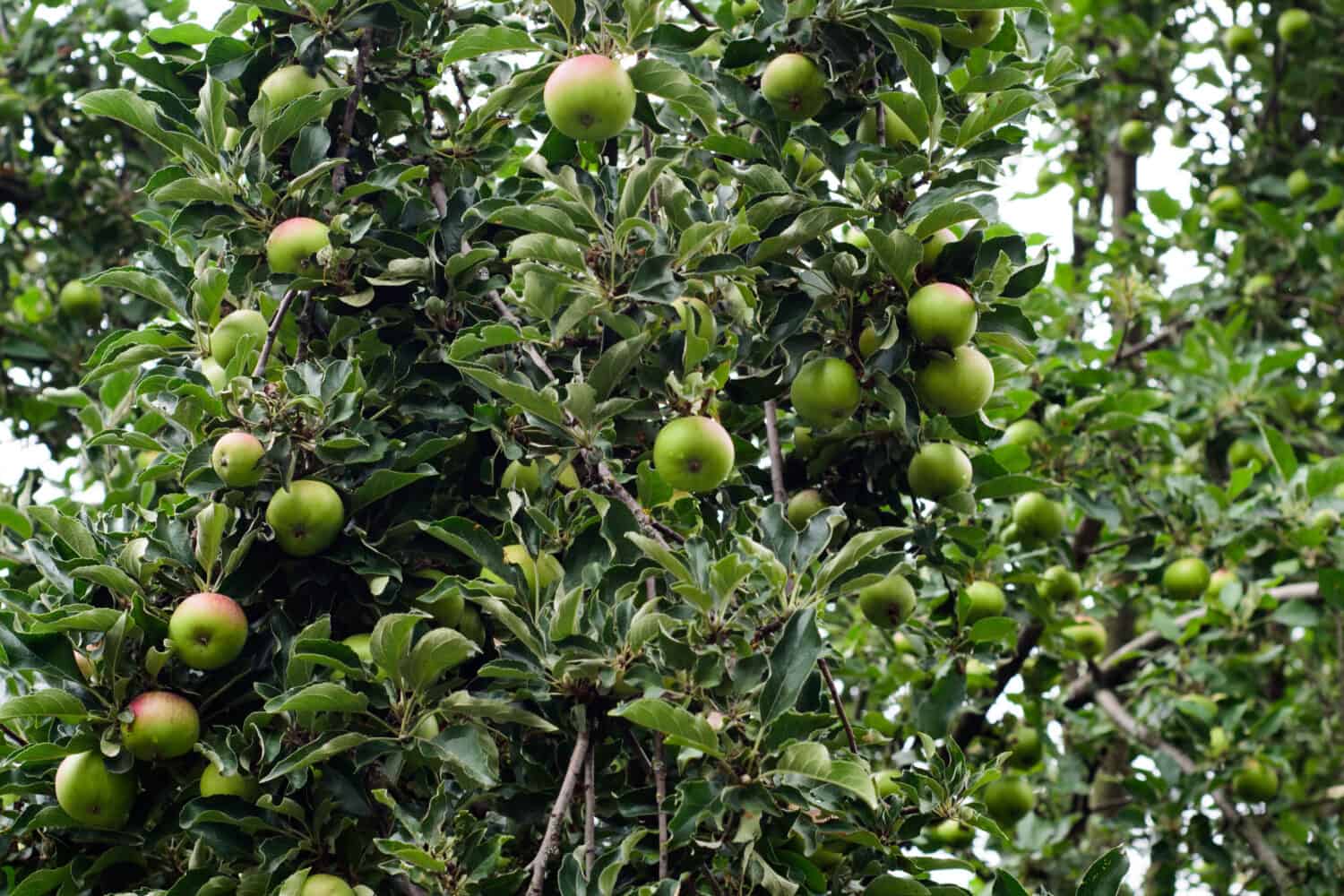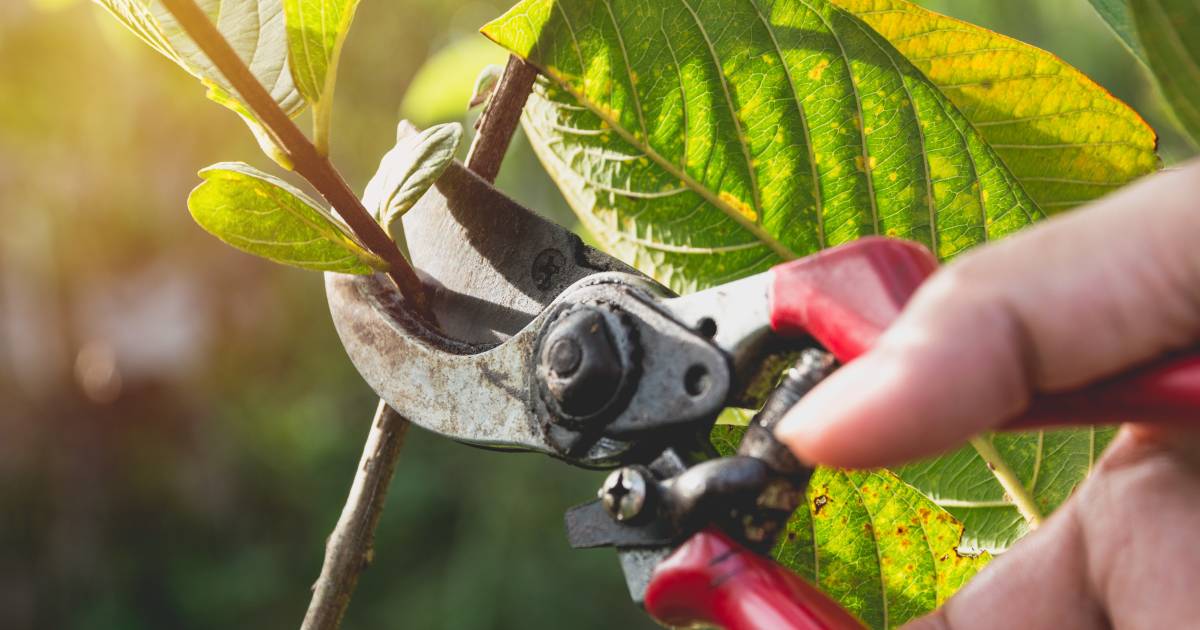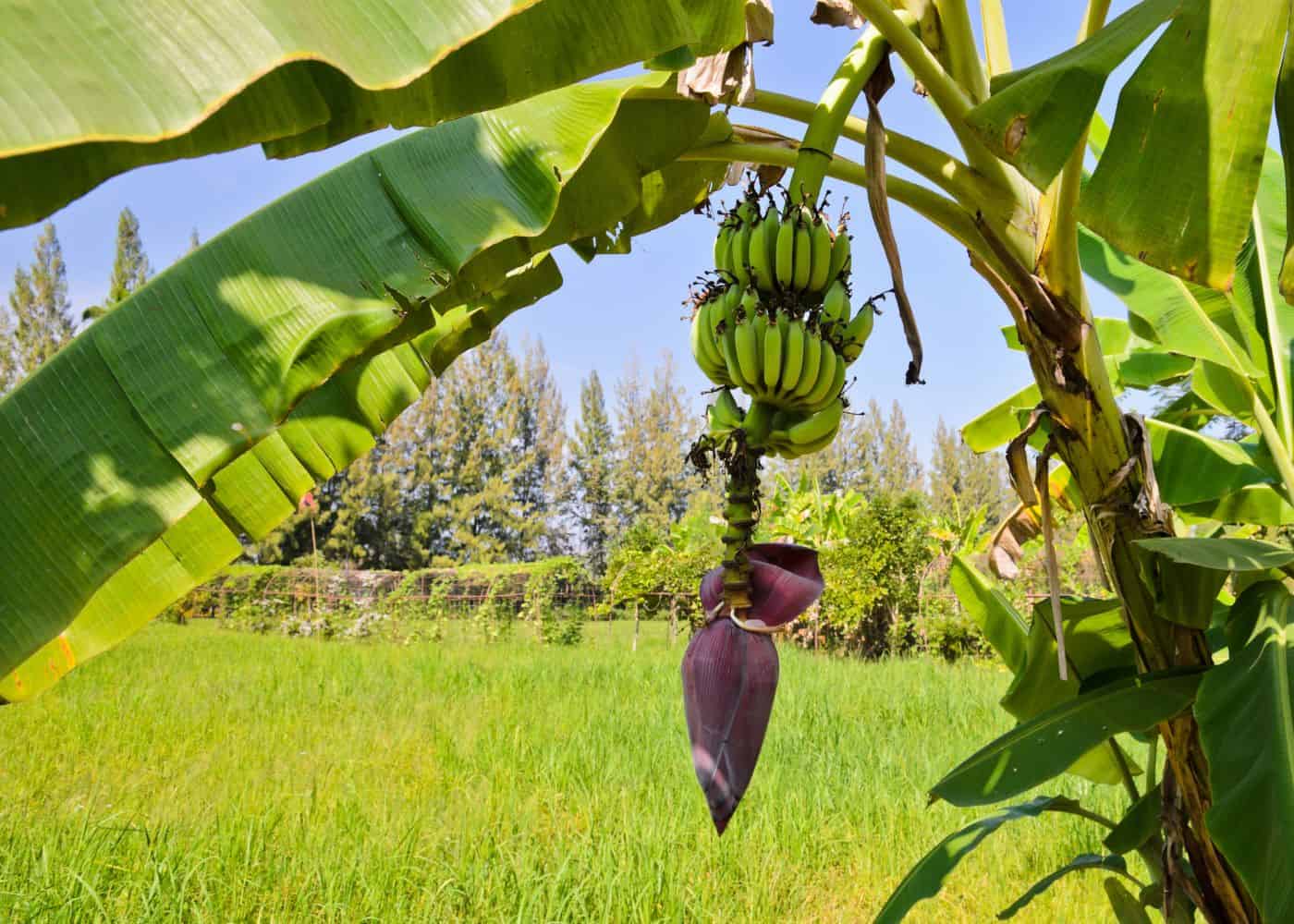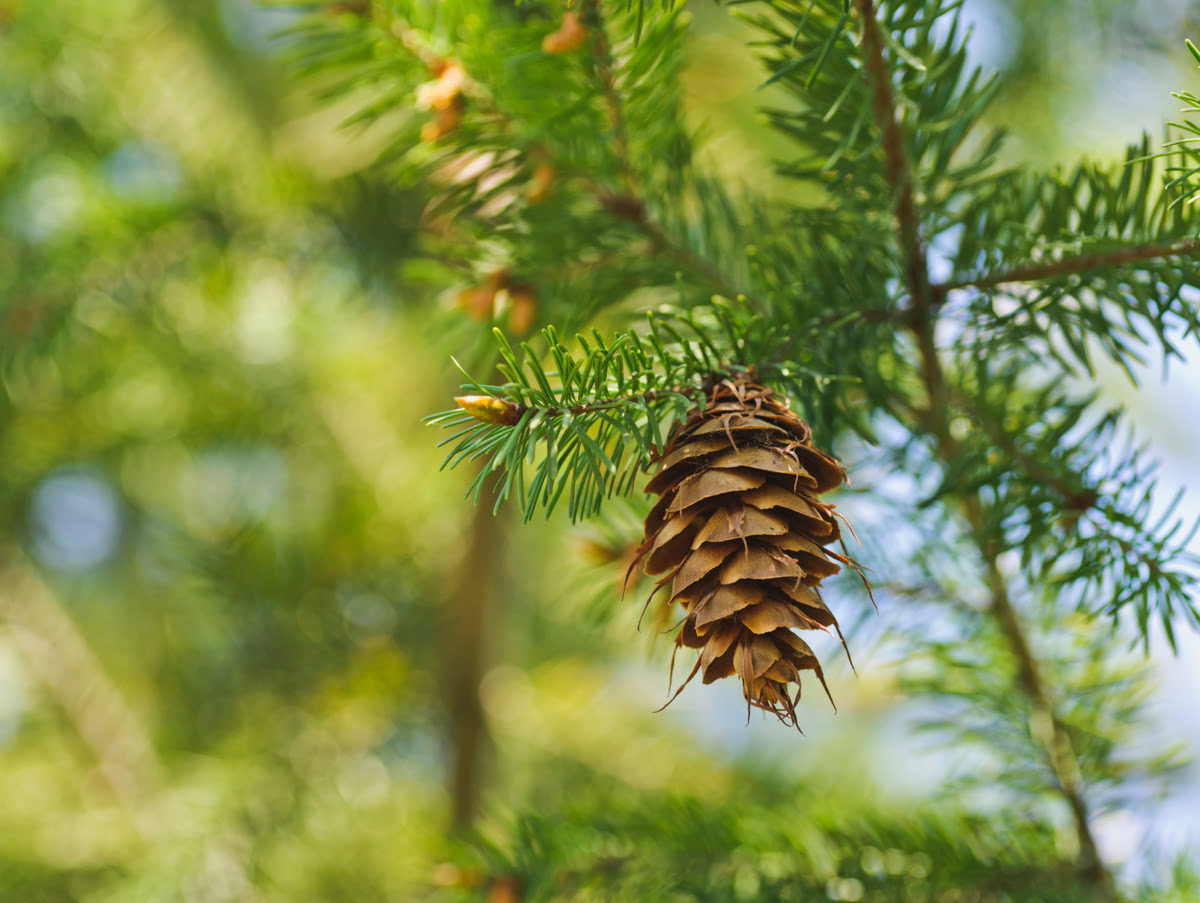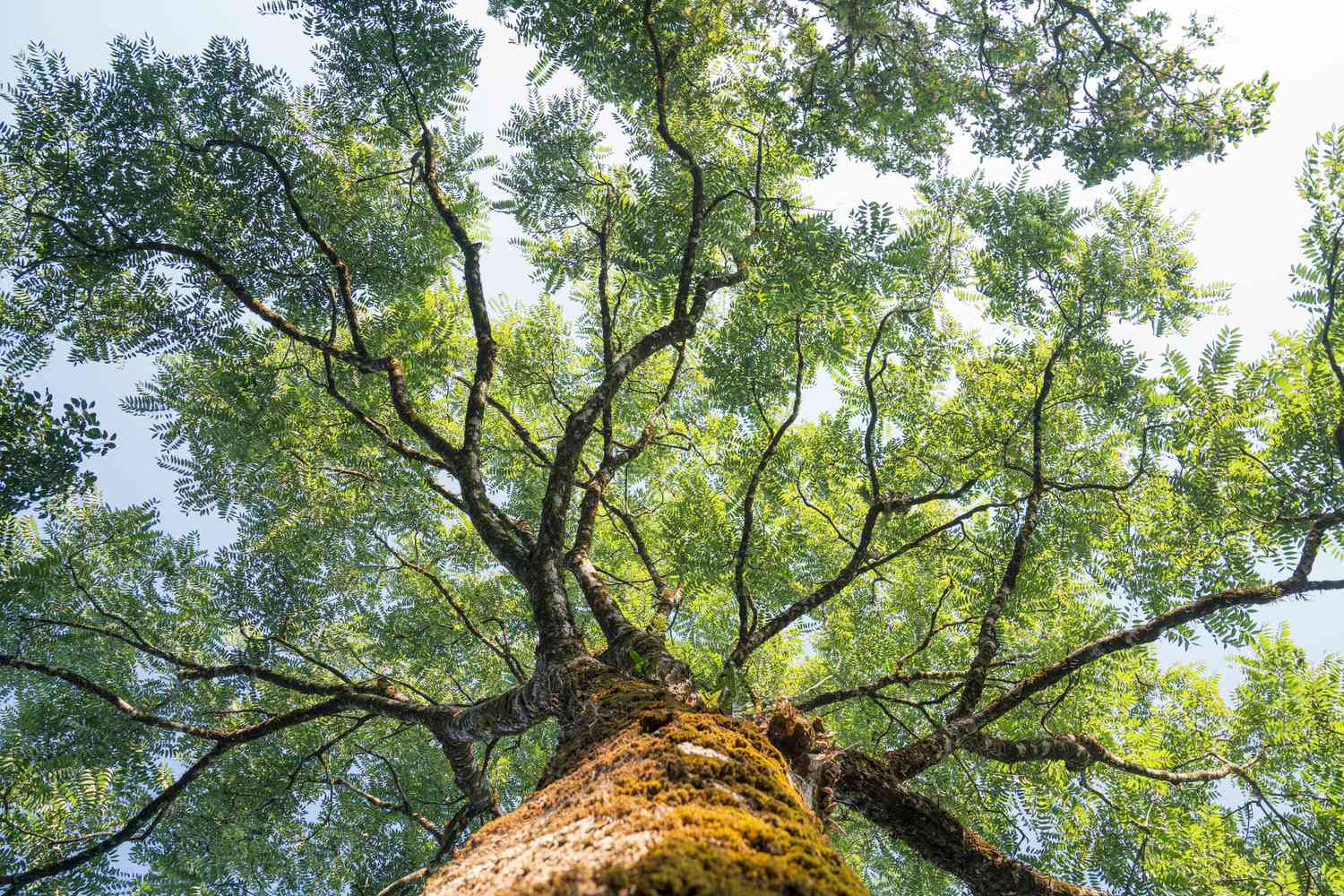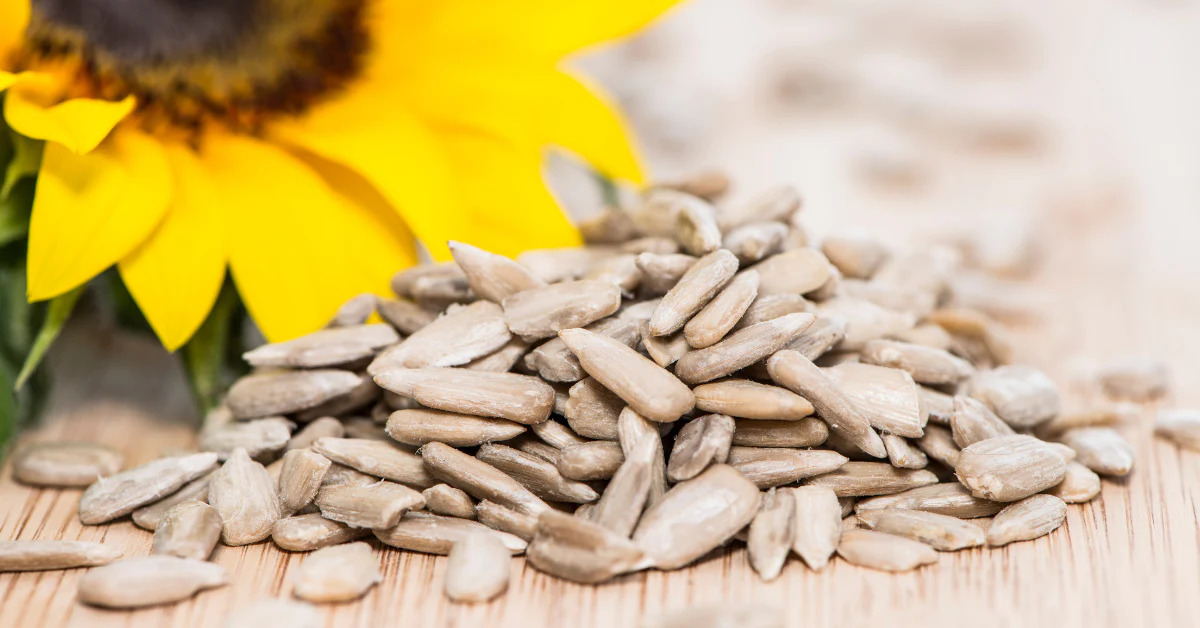Home>Types of Gardening>Edible Gardening>When Do Banana Trees Produce Fruit
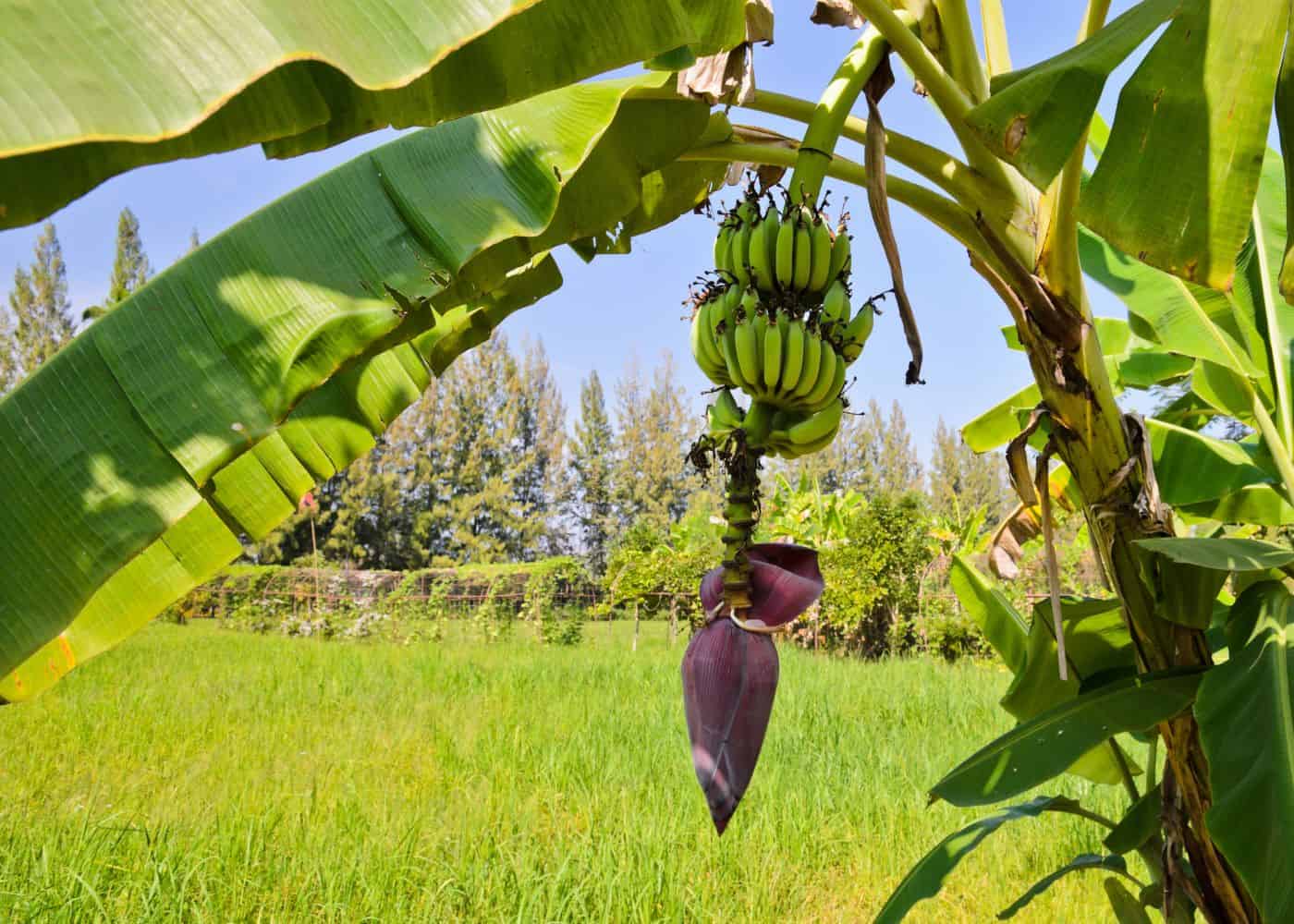

Edible Gardening
When Do Banana Trees Produce Fruit
Published: October 29, 2023
Discover when banana trees start producing fruit in your edible garden. Learn the timeframe for enjoying homegrown bananas and expert tips for successful cultivation.
(Many of the links in this article redirect to a specific reviewed product. Your purchase of these products through affiliate links helps to generate commission for Chicagolandgardening.com, at no extra cost. Learn more)
Table of Contents
Introduction
Welcome to the world of edible gardening, where you can grow and enjoy fresh, homegrown produce right from your own backyard. One of the most popular and fascinating plants in the edible garden is the banana tree. Known for its tropical vibe, delicious fruits, and lush foliage, the banana tree is a favorite among gardeners.
But when can you expect your banana trees to start producing fruit? This is an important question for any aspiring gardener looking to grow their own bananas. In this article, we will explore the factors that influence fruit production, the optimal growing conditions for banana trees, the process of flowering and fruit formation, as well as the timeframe for fruit production. We will also discuss any factors that may delay or inhibit fruit production, and offer guidance on harvesting and maintaining your banana trees to ensure a bountiful harvest.
Banana trees, scientifically known as Musa spp., are native to tropical regions and are grown for their edible fruits. These trees are not actually trees, but large herbaceous plants that belong to the same family as lilies and orchids. Their impressive size, sturdy pseudostems, and distinctive broad, large leaves make them an attractive addition to any garden.
While banana trees can thrive in tropical and subtropical climates, they can also be successfully grown in containers and brought indoors in colder regions. Whether you have a large garden or limited space, growing your own banana trees can be a rewarding experience that allows you to savor the taste of homegrown tropical fruits.
Now, let’s dive into the fascinating world of banana tree fruit production and discover when you can expect to enjoy the fruits of your labor.
Factors Affecting Fruit Production
Several factors can influence the fruit production of banana trees. Understanding these factors is crucial for maximizing your chances of a successful harvest. Here are some key factors to consider:
- Variety Selection: The choice of banana variety plays a significant role in fruit production. Different varieties have varying levels of cold tolerance, disease resistance, and fruiting characteristics. It is important to select a variety that is well-suited to your climate and desired fruit characteristics.
- Temperature: Banana trees thrive in warm temperatures, ideally between 75°F and 95°F (24°C and 35°C). Temperature extremes, such as frost or prolonged periods of high heat, can negatively impact flower formation and fruit development.
- Light: Adequate sunlight is crucial for banana trees to produce fruits. They require at least 6 to 8 hours of direct sunlight per day. Insufficient light can lead to weak growth, delayed flowering, and reduced fruit yield.
- Watering: Banana trees need regular and consistent watering to support healthy growth and fruit production. They prefer well-drained soil that is kept evenly moist but not waterlogged. Inadequate watering can result in poor fruit quality and yield.
- Nutrition: Providing the right nutrients is essential for optimal fruit production. Bananas are heavy feeders and require a balanced fertilizer regime that incorporates essential macronutrients such as nitrogen, phosphorus, and potassium, as well as micronutrients like magnesium and zinc.
- Pollination: Unlike many fruit trees, bananas are typically parthenocarpic, meaning they can develop fruit without fertilization. However, some cultivars may require pollination by insects for fruit set. Ensure the presence of pollinators in your garden to maximize fruit production.
By paying attention to these factors and providing the necessary care and conditions, you can create an environment that encourages healthy growth and abundant fruit production in your banana trees. Now, let’s delve into the optimal growing conditions for banana trees in more detail.
Optimal Growing Conditions
To help your banana trees thrive and produce an abundance of fruit, it is important to provide them with the optimal growing conditions. Here are the key factors to consider:
Climate: Banana trees prefer tropical or subtropical climates. They thrive in areas with temperatures ranging from 75°F to 95°F (24°C to 35°C). If you live in a colder climate, consider growing bananas in containers that can be moved indoors during winter or choose cold-hardy varieties.
Sunlight: Banana trees require at least 6 to 8 hours of direct sunlight daily. Position them in a location where they will receive ample sunlight to ensure optimal growth and fruit production. If you have limited sunlight, consider using supplemental grow lights to provide the necessary light requirements.
Soil: The soil should be rich, well-draining, and loamy. Banana trees prefer slightly acidic to neutral soil with a pH range of 5.5 to 7.0. It is important to improve the soil’s fertility by incorporating organic matter, such as compost or well-rotted manure, to provide the necessary nutrients for healthy growth.
Watering: Banana trees require regular watering to keep the soil consistently moist. However, overwatering can lead to root rot, so it is important to find a balance. Water deeply and thoroughly, allowing the soil to dry out slightly between watering sessions. Mulching around the base of the plant can help retain moisture and regulate soil temperature.
Wind Protection: Banana tree leaves are large and can easily be damaged by strong winds. Planting them in a sheltered location or providing windbreaks, such as fences or shrubs, can help protect the plants from wind damage and promote healthy growth.
Spacing: Give your banana trees ample space to grow. They can become quite large, with some varieties reaching heights of 10 to 20 feet (3 to 6 meters). Plant them at least 10 to 15 feet (3 to 4.5 meters) apart to allow for proper air circulation and to prevent overcrowding.
Pruning: Pruning is not necessary for fruit production but can help manage the size and appearance of the tree. Remove any dead or damaged leaves, as well as any suckers (shoots arising from the base of the plant) that are taking away energy from the main stem.
By providing these optimal growing conditions, you can create an environment that promotes healthy growth and maximizes the fruit production of your banana trees.
Flowering and Fruit Formation
Watching your banana trees go through the process of flowering and fruit formation is an exciting journey. Here’s a breakdown of the stages involved:
Inflorescence Emergence: Banana trees produce a large purple cone-shaped structure called the inflorescence, which emerges from the center of the pseudostem. This is where the flowers and subsequent fruits will develop. The emergence of the inflorescence is a sign that your banana tree is ready to begin its fruiting journey.
Male and Female Flowers: Banana flowers are unique in that they are “perfect” flowers, containing both male and female reproductive parts. The male flowers are located at the tip of the inflorescence, while the female flowers are positioned lower down the stem. The male flowers open first, releasing pollen, which is then carried down to the female flowers for pollination.
Pollination: While bananas are typically parthenocarpic and can form fruit without pollination, some cultivars may require pollination for optimal fruit set. Certain insects, such as bees and butterflies, are attracted to the sweet nectar of the flowers and may aid in pollination. Additionally, gentle shaking of the inflorescence can help transfer the pollen to the female flowers.
Fruit Development: After successful pollination, the female flowers develop into fruits. Each flower will produce a single hand, which is a cluster of bananas. The hands grow in a spiral pattern along the inflorescence, and each hand can contain anywhere from 10 to 20 bananas, depending on the variety.
Fruit Maturation: Once the fruit has formed, it takes several months for the bananas to ripen. The timing can vary depending on the banana variety and environmental conditions. As the bananas mature, they will change in color, gradually transitioning from green to yellow. It’s important to monitor the fruit’s progress and harvest them at the desired ripeness.
It’s worth noting that not all flowers on the inflorescence will develop into fruit. Some flowers may not receive adequate pollination or may naturally drop off during development. Don’t be alarmed if you see flowers falling off – this is a natural part of the process.
By understanding the stages of flowering and fruit formation, you can better anticipate when to expect your banana trees to produce their delicious fruits.
Timeframe for Fruit Production
Patience is key when it comes to growing banana trees and waiting for them to produce fruit. The timeframe for fruit production can vary depending on several factors, including the banana variety, growing conditions, and environmental factors. Here is a general timeline to give you an idea of what to expect:
Planting to Flowering Stage: After planting a banana tree, it may take around 9 months to 2 years for the plant to reach the flowering stage. This timeframe can be influenced by factors such as the banana variety, growing conditions, and the size of the plant at the time of planting.
Flowering to Fruit Formation: Once the inflorescence emerges and the flowering stage begins, it typically takes around 3 to 6 months for the bananas to start forming. The timing can vary depending on the banana variety and growing conditions.
Fruit Maturation: After the bananas start forming, it generally takes an additional 2 to 6 months for the fruit to fully ripen and become ready for harvest. The ripening process can be influenced by factors such as temperature, sunlight, and proper care.
It’s important to note that these timeframes are approximate and can vary. Tropical and warm regions with optimal growing conditions may experience faster fruit production, while cooler or less favorable environments may see slower development.
Additionally, it’s worth mentioning that banana trees are monocarpic, meaning they produce fruit once and then die. However, don’t worry – they usually have offset suckers or pups that emerge from their base to continue the cycle of growth and fruit production. These pups can be separated and replanted to create new banana trees.
While waiting for your banana trees to produce fruit may require some patience, the reward of enjoying homegrown, fresh bananas makes it all worthwhile. Now that we have covered the timeframe for fruit production, let’s explore any factors that can potentially delay or inhibit the fruiting process.
Factors Delaying or Inhibiting Fruit Production
While banana trees are generally resilient and productive, there are some factors that can delay or inhibit fruit production. Understanding these factors can help you address any issues and maximize your chances of a successful harvest. Here are some common factors to consider:
Climate Extremes: Extreme weather conditions can have a negative impact on banana fruit production. Cold temperatures below 50°F (10°C) can damage or kill banana trees, while prolonged periods of high heat can hinder flower formation and fruit development. Protecting your banana trees from temperature extremes is crucial to ensure optimal fruit production.
Disease and Pest Infestations: Banana trees are susceptible to various diseases, such as Panama disease and black sigatoka, as well as pests like nematodes and aphids. These can weaken the plant and inhibit fruit production. Implementing regular monitoring, proper sanitation, and taking preventive measures such as using disease-resistant varieties and organic pest controls can help minimize the impact of diseases and pests.
Inadequate Nutrition: Banana trees are heavy feeders and require a steady supply of nutrients to support fruit production. Inadequate soil fertility or imbalanced fertilizer application can result in poor fruit yield. Regularly fertilizing with a balanced fertilizer and ensuring the soil has sufficient organic matter can help provide the necessary nutrients for robust fruit production.
Lack of Pollinators: While bananas are primarily parthenocarpic and can develop fruit without pollination, the presence of pollinators, such as bees, can enhance fruit set and yield. If your banana variety requires pollination for optimal fruiting, make sure to attract pollinators to your garden by planting flowering plants or providing habitat.
Improper Pruning or Sucker Removal: Pruning and removal of suckers should be done carefully and at the right time. Improper pruning or removing too many suckers can stress the plant and affect its ability to produce fruit. Follow proper pruning practices and allow a healthy number of suckers to develop to ensure a robust fruiting process.
Improper Irrigation: Overwatering or underwatering can hinder fruit production. Overwatering can lead to root rot and nutrient leaching, while underwatering can cause stress and result in poor fruit development. Find the right balance by watering the plants deeply but allowing the soil to dry out slightly between watering sessions.
By being aware of these factors, taking proactive measures, and providing optimal growing conditions, you can overcome potential obstacles and encourage fruitful production from your banana trees. Now, let’s move on to the harvest and maintenance of your banana trees for continued success.
Harvesting and Maintaining Banana Trees
When it comes time to harvest your banana trees, it’s important to know the proper techniques to ensure a successful harvest. Additionally, regular maintenance is essential for the health and longevity of your banana trees. Here are some guidelines to help you with harvesting and maintaining your banana trees:
Harvesting: Bananas are typically harvested when they are fully mature but still green. Harvesting too early may result in underripe and less flavorful fruit, while waiting too long can lead to overripe and mushy bananas. To harvest, cut the entire hand of bananas from the stem with a sharp knife. Be careful not to damage the remaining hands or the pseudostem.
Storing: After harvesting, you can store green bananas at room temperature to allow them to ripen gradually. If you want to slow down the ripening process, you can refrigerate them. Once they have ripened to your desired level of sweetness, you can consume them fresh or use them in various recipes.
Mulching: Applying a layer of organic mulch around the base of your banana trees can help retain moisture, suppress weed growth, and provide a slow release of nutrients as it decomposes. This will help maintain optimal growing conditions for the tree and support healthy fruit production.
Watering: Regular and consistent watering is crucial for maintaining healthy banana trees. Keep the soil consistently moist but not waterlogged. Adjust the watering frequency based on the temperature and rainfall patterns in your area. Water deeply to encourage the roots to grow deeper into the soil.
Fertilizing: Regular fertilization is important to ensure adequate nutrient supply for your banana trees. Apply a balanced fertilizer according to the manufacturer’s recommendations. Supplement with organic matter, such as compost or well-rotted manure, to provide additional nutrients and improve soil fertility.
Pest and Disease Management: Regular monitoring for pests and diseases is important for maintaining the health of your banana trees. Inspect the leaves for signs of damage or infestation and take appropriate measures to address any issues. Use organic pest control methods whenever possible to minimize environmental impact.
Pruning: Pruning can help manage the size of your banana trees and remove any dead or damaged leaves. It is best to prune after the fruiting cycle is complete. Remove any suckers that emerge around the base of the plant to maintain a manageable size and focus the plant’s energy on fruit production.
By following these guidelines for harvesting and maintaining your banana trees, you can enjoy a continuous bounty of delicious homegrown bananas and ensure the long-term health and productivity of your plants.
Conclusion
Growing banana trees and witnessing the process of fruit production can be a truly rewarding experience. By understanding the factors that influence fruit production, providing optimal growing conditions, and addressing any potential challenges, you can maximize your chances of a successful harvest. Remember the key points we covered:
– Factors such as variety selection, temperature, light, watering, nutrition, and pollination can all affect fruit production in banana trees.
– Providing the optimal growing conditions, including the right climate, sunlight, soil, watering, and wind protection, will promote healthy growth and enhance fruit production.
– The process of flowering and fruit formation involves the emergence of the inflorescence, the development of male and female flowers, pollination, and the growth and maturation of the fruits.
– The timeframe for fruit production can vary depending on the banana variety and growing conditions, typically taking several months from flowering to fruit maturation.
– Factors such as climate extremes, disease, inadequate nutrition, lack of pollinators, improper pruning or sucker removal, and improper irrigation can delay or inhibit fruit production.
– Harvesting should be done when the bananas are fully mature but still green, and proper storing techniques can help control ripening.
– Regular maintenance activities, including mulching, watering, fertilizing, pest and disease management, and pruning, are essential for the health and longevity of your banana trees.
With this knowledge and guidance, you are well-equipped to embark on your edible gardening journey and enjoy the satisfaction of growing your own bananas. Whether you have a large garden or limited space for container gardening, the tropical and flavorful fruits of your labor will be a delightful addition to your home. So, go ahead and embrace the wonderful world of edible gardening and start growing your very own banana trees today!

